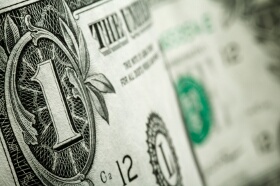Summer has ended, and traders returned from vacations, meaning that trading activity should start picking up. The first trading week of autumn surprised market participants with two shocks: European Central Bank policy announcement and US employment data. What traders can expect from the second week? Let us look at the US dollar and its potential moves against other major currencies.
The dollar demonstrated a huge rally last week after the European Central Bank made an unexpected announcement of additional monetary stimulus. The rally stalled later after US non-farm payrolls came out much worse than was expected, but impact of US employment data was not as big as it usually is. All in all, the greenback rallied against all other most-traded currencies over the week with the exception of the Australian dollar. The interesting question is: can the greenback resume its rally or a correction should be expected?
The truth is that analysts are divided on this matter. On one hand, expectations of monetary tightening from the Federal Reserve are certainly supporting the US currency. On top of that, most major dollarâs peers have their own problems. The euro and the yen suffer from accommodative policies of their central banks, the pound is hurt by the referendum regarding Scotlandâs independence, while the New Zealand dollar declined after it lost support from prospects of tighter monetary policy.
On other hand, the Fed policy meeting will happen on September 17. While it will be accompanied by press-conference and economic projections, making the gathering a rather important event, traders need to wait more than a week before the Fedâs policy decision, and with no speeches from policy makers scheduled ahead of the meeting investors may turn their attention towards other events.
Currently, one of the most important events (or at least one that has the most attention from press) is the peace-talks between Ukraine and pro-Russian separatists. The negotiations are a wild card as it is unclear what their result will be. It is likely that a positive outcome will result in risk appetite and downside pressure for the dollar, while a negative outcome should boost the US currency due to risk aversion.
Forex Crunch is bullish on the dollar against all its counterparts. On the contrary, DailyFX considers the current dollarâs strength unwarranted and thinks that the currency should reverse its upward movement.
If you have any questions, comments or opinions regarding the US Dollar,
feel free to post them using the commentary form below.
